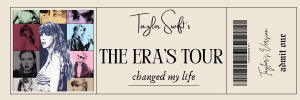As a new dawn of sustainability rises, young workers and professionals are seeking a more eco-friendly and cost-effective alternative to dressing.
By Shaneen Page
Contemporary fashion is fast, impersonal, and poorly made. In an age of mass marketed and mass–produced garments that hit the shelves sometimes as fast as seven days from design inception, many consumers are opting for the route known as slow fashion. Young workers and professionals are seeking a method of consumption that is friendly to their wallets and the planet, and slow fashion seems to be the solution. As defined in Textile Beat, slow fashion is “the antithesis of fast fashion. It considers the ethics and sustainability of garments… while focusing on timeless style, comfort and connection.”
Well Made Clothes wrote recently that fast fashion is “driven, at its core, by low costs and corner-cutting tactics”. Slow fashion is at the opposite end of the scale. Instead of the focus being on the sheer speed and volume that brands like Zara and H&M can churn out garments, slow fashion seeks to encourage a more emotional and thoughtful approach to dressing. This can come in the form of investing in handmade garments, buying second-hand, or even just the act of reducing the amount of garments bought seasonally. This approach to dressing is rising in popularity, with a recent study by Unilever reporting that more than 1⁄3 of young consumers are aligning their buying habits with their social and environmental beliefs.
“It feels like you’ve found a diamond in the rough when you find something good, like you’ve cheated the system,” – Kai Willebrand-Tarafdar
It makes sense that this movement is gaining traction among young workers and professionals, as it can very often be much more cost-effective than buying fast fashion garments. Kai Willebrand-Tarafdar is a student at Queensland University of Technology who sees the positive change that supporting slow fashion makes on his wallet. While not considering himself an actively conscious or sustainable shopper, Kai treats second-hand shopping like an adventure. “It’s kind of exciting going into a op shop,” he says, sporting a vintage Tommy Hilfiger bomber jacket. “It feels like you’ve found a diamond in the rough when you find something good, like you’ve cheated the system.”
As young students and workers, slow fashion is often favoured due to its affordability and a better cost-per-wear value. Liam Jessup is another QUT student who opts for second-hand goods. Liam remarked that it is “partly out of necessity… partly because I don’t really like trends or brand name items, I don’t really see the value in following that system.” Liam mentioned that even if he weren’t making the conscious decision to shop slow fashion, he still wouldn’t be purchasing brand-new garments very often as it’s not within his budget.
While Liam and Kai are aligning their buying habits with aspects of slow fashion for the affordability, Elly’s approach is to invest in something made with love as opposed to a machine. As a local artist and designer, Elly Malone’s approach to fashion and buying is guided by her views as an artist. Elly chooses to support other local designers because she knows the love and care that goes into the creation of an artwork or garment. Designs for her screen-printed T-shirts are started sometimes as long as three months before they’re ready to be released. It’s for this reason that Elly doesn’t feel the need to follow trends set by fast fashion and the media. When asked if she was a conscious shopper, Elly mentioned reading the Ethical Fashion Report, a guide written by Baptist World Australia, which gives brands (Nike, Adidas and H&M, to name a few) a rating from A to F based on how they rank up against industry sustainability measures. “When I found out that certain brands had an F rating, they stuck in my mind as companies not to support, but it wasn’t much of a loss anyway. You never go into these fast fashion stores and fall in love with their stuff anyway… you’re more just shopping there out of convenience.”
As education about the fashion industry increases, so too will the support of the slow fashion movement. Clare Crowley believes that even if she wasn’t a Fashion student and wasn’t aware of the problems of the industry, she would still support slow fashion as a more cost-effective alternative. “You can see a massive difference in quality,” she says. “When you’re wearing those fast fashion pieces you can see after a few wears that they’re falling apart, a lot faster than the quality stuff. Looking at it from a financial perspective, I don’t want to waste my money on things that won’t last.”







